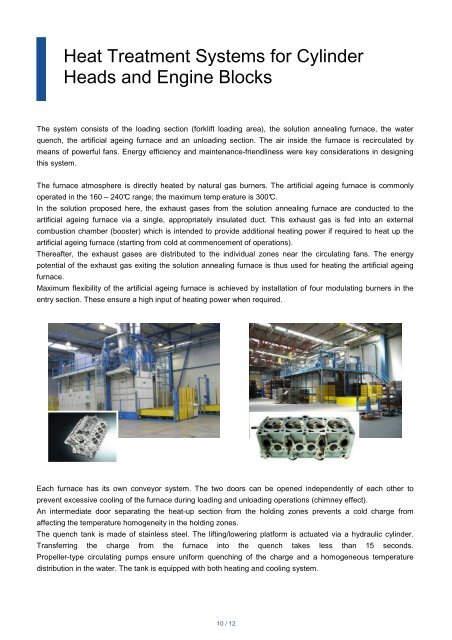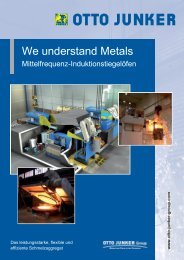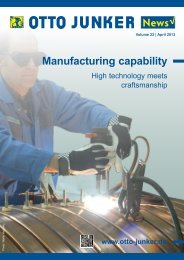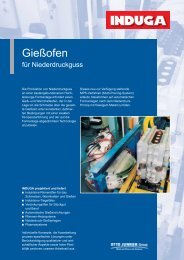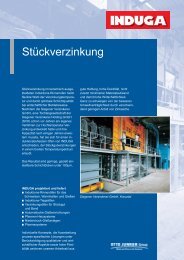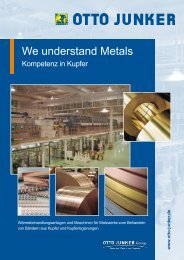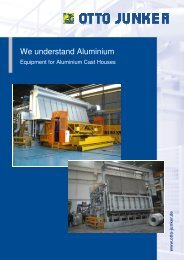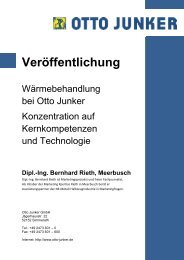Download Brochure Heat Treatment for Castings and Forgins 2012
Download Brochure Heat Treatment for Castings and Forgins 2012
Download Brochure Heat Treatment for Castings and Forgins 2012
You also want an ePaper? Increase the reach of your titles
YUMPU automatically turns print PDFs into web optimized ePapers that Google loves.
<strong>Heat</strong> <strong>Treatment</strong> Systems <strong>for</strong> Cylinder<br />
Heads <strong>and</strong> Engine Blocks<br />
The system consists of the loading section (<strong>for</strong>klift loading area), the solution annealing furnace, the water<br />
quench, the artificial ageing furnace <strong>and</strong> an unloading section. The air inside the furnace is recirculated by<br />
means of powerful fans. Energy efficiency <strong>and</strong> maintenance-friendliness were key considerations in designing<br />
this system.<br />
The furnace atmosphere is directly heated by natural gas burners. The artificial ageing furnace is commonly<br />
operated in the 160 – 240°C range; the maximum temp erature is 300°C.<br />
In the solution proposed here, the exhaust gases from the solution annealing furnace are conducted to the<br />
artificial ageing furnace via a single, appropriately insulated duct. This exhaust gas is fed into an external<br />
combustion chamber (booster) which is intended to provide additional heating power if required to heat up the<br />
artificial ageing furnace (starting from cold at commencement of operations).<br />
Thereafter, the exhaust gases are distributed to the individual zones near the circulating fans. The energy<br />
potential of the exhaust gas exiting the solution annealing furnace is thus used <strong>for</strong> heating the artificial ageing<br />
furnace.<br />
Maximum flexibility of the artificial ageing furnace is achieved by installation of four modulating burners in the<br />
entry section. These ensure a high input of heating power when required.<br />
Each furnace has its own conveyor system. The two doors can be opened independently of each other to<br />
prevent excessive cooling of the furnace during loading <strong>and</strong> unloading operations (chimney effect).<br />
An intermediate door separating the heat-up section from the holding zones prevents a cold charge from<br />
affecting the temperature homogeneity in the holding zones.<br />
The quench tank is made of stainless steel. The lifting/lowering plat<strong>for</strong>m is actuated via a hydraulic cylinder.<br />
Transferring the charge from the furnace into the quench takes less than 15 seconds.<br />
Propeller-type circulating pumps ensure uni<strong>for</strong>m quenching of the charge <strong>and</strong> a homogeneous temperature<br />
distribution in the water. The tank is equipped with both heating <strong>and</strong> cooling system.<br />
10 / 12


